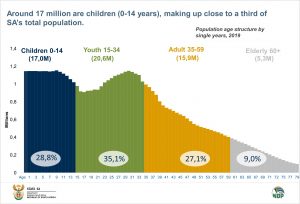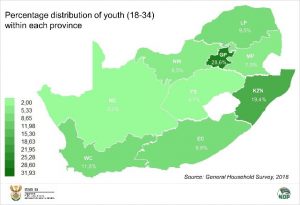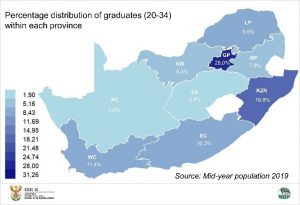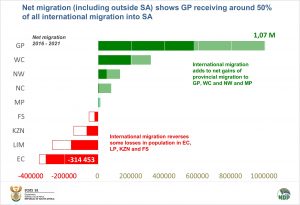SA population reaches 58,8 million
The estimated population of South Africa stands at 58,78 million, according to the recently released 2019 mid-year population estimates (MYPE). The MYPE report provides population estimates at national and provincial levels, disaggregated by age and sex.
World Population Day, which took place on the 11th July, focused on enabling the youth with the necessary skills to reach their potential and economic growth. According to the mid-year estimates of 2019, the youth (aged 18–34) constitute almost a third of the population (17,84 million) in South Africa, with 9,04 million males and 8,80 million females. Almost 30% of youth (5,10 million or 28,6%) reside in Gauteng, with 3,47 million in KwaZulu-Natal (19,4%), making up almost half of all youth in South Africa. The Free State (4,7%) and the Northern Cape (2,0%) have the lowest proportions of youth.
In South Africa, approximately 13% of the youth aged 20–34 are graduates. At a provincial level, it is clear the more rural provinces are disadvantaged, with significantly lower proportions of young graduates. This can be attributed to a number of factors, including migration. Interprovincial as well as international migration patterns significantly influence the provincial population numbers and structures in South Africa.
Gauteng and Western Cape received the highest number of in-migrants. In the period 2016–2021, net international migration to South Africa is estimated to have reached over one million. Gauteng accounts for 47,5% of net international migration, with Western Cape receiving 11,6%. Free State (3,1%) and the Eastern Cape (3,6%) attract the fewest of the net international migrants.
Using the demographic window of opportunity, the youth bulge in South Africa could be harnessed to unleash a potential demographic dividend. However, the majority of South Africa’s youth often falls within one of three categories: uneducated, unemployed, and unemployable. Quarter 1 of the 2019 QLFS indicated that youth (18–34) unemployment stands at 39,5%. Amongst those not in education, employment or training (NEET) (46,8%), the majority were female and black African, with just over a quarter (28,8%) having tertiary qualifications.
This picture is further supported by the 2015 Living Conditions Survey report, which indicates that 33,4% of persons aged 15–24 were considered poor on a multidimensional poverty scale due, primarily, to lack of educational attainment. Using a money-metric approach, a fifth of South Africa’s youth (18–34 years old) fell below the lower bound poverty line of R664 per person per month. Using population estimates as well as various survey indicators as inputs in the process of planning, policy and decision-making; challenges and opportunities for the youth in South Africa can be deliberated in order to ensure that no one gets left behind.
For more information on Mid-year estimates, download the full report here.





